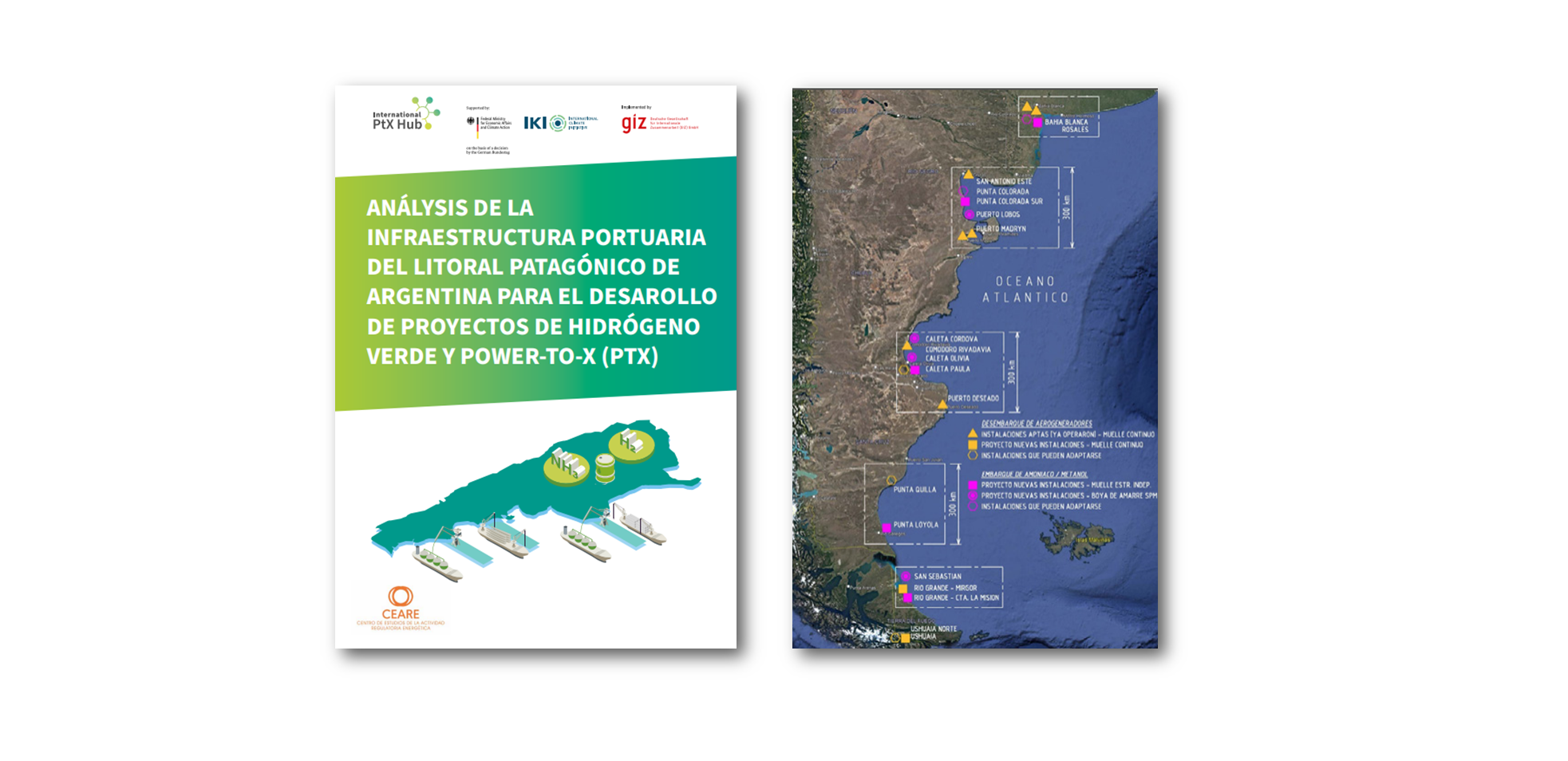The global demand for hydrogen, which stood at 94 million tonnes in 2021, is expected to increase as the pressure for reaching defossilisation goals grows. In this context, Argentina constistutes a fertile ground to meet this growing international demand. Argentina already produces over 395,000 tonnes of hydrogen annually for key industrial processes such as ammonia/urea-based fertilisers (33%), petroleum refining hydro-treating (27%), iron oxide reduction in steelmaking (16%) and methanol production (15%).
Our recently published study evaluates the feasibility of adapting existing port infrastructure along Argentina’s Atlantic coast to support green hydrogen and Power-to-X (PtX) projects.
The Patagonian coast of Argentina, rich with natural resources and strategic geographic advantages, is positioned to become a major player in the green hydrogen and PtX economy:
- Patagonia and Buenos Aires have wind generation capacities exceeding 50%.
- The Cuyo and NOA regions have notable solar photovoltaic generation capacities around 30%.
The research focuses on both public and private port systems, considering essential elements such as docking, mooring, cargo operations, nautical access, and land storage to determine their readiness for hydrogen production and export. Considering the complexities of transporting gaseous hydrogen, the study emphasises exporting PtX fuels and feedstocks like ammonia and methanol, which are more practical for long-distance shipping.
To sum up, developing Argentina’s hydrogen economy will require new infrastructure and adaptation of existing facilities, especially in Patagonia and southern Buenos Aires. Argentina is projected to produce low-cost, renewable hydrogen, making regions like Patagonia and Buenos Aires ideal for export-oriented projects.
